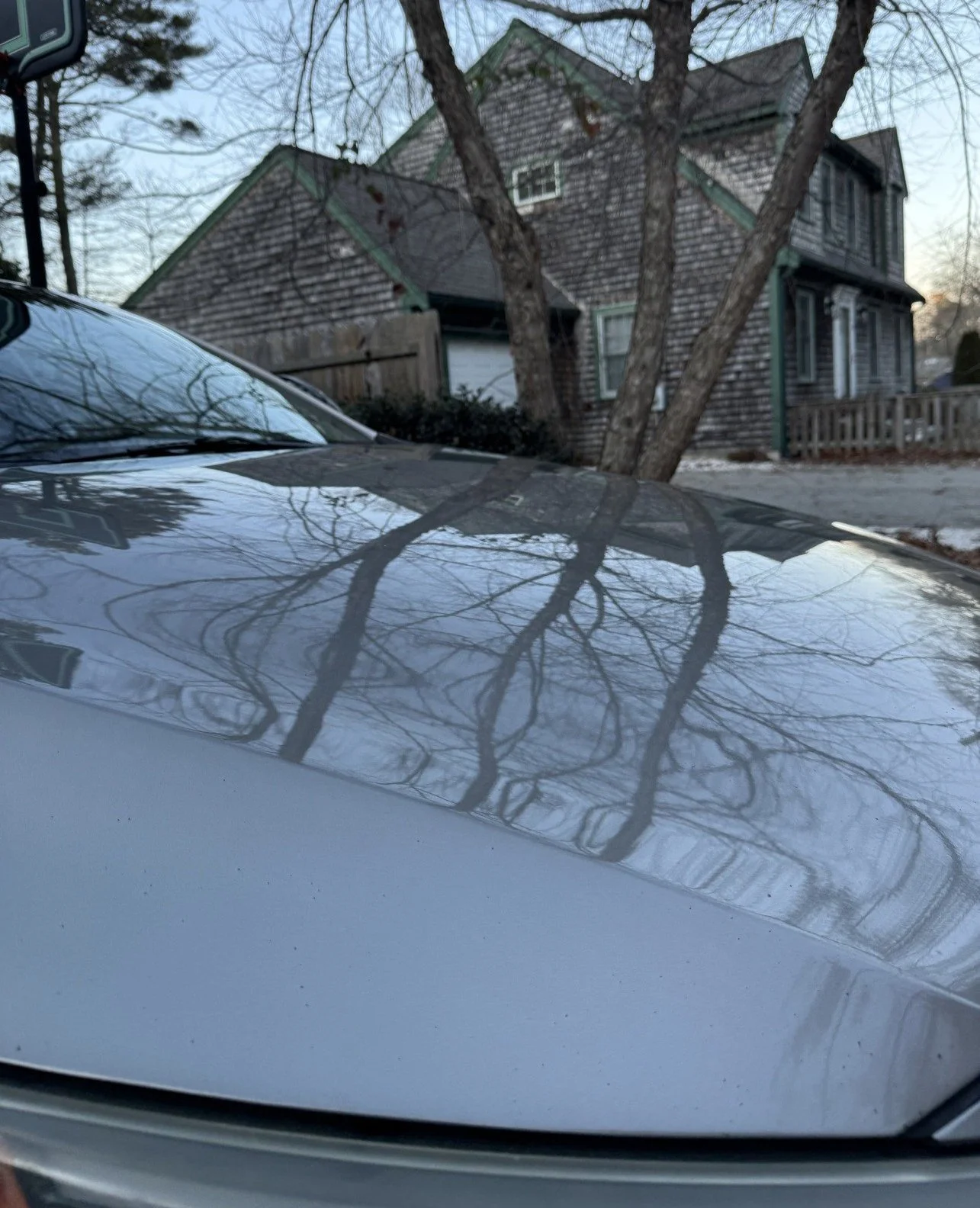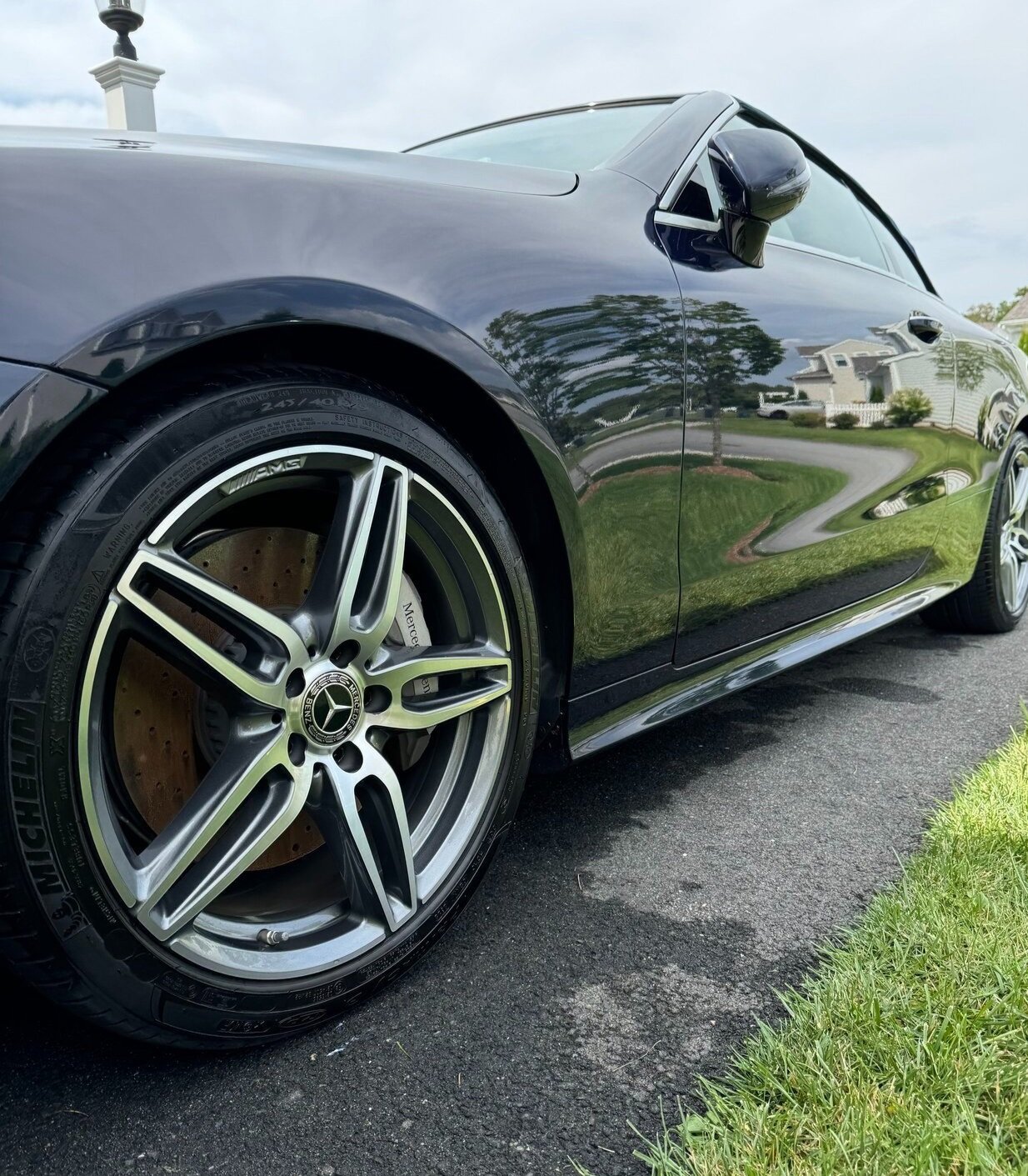
Paint Correction Services in Plymouth MA
5-Star Reviewed Professional Paint Polishing & Correction Work in Plymouth
What is a Paint Correction/Polishing?
A Paint Correction involves removing imperfections in the clear coat of your paint by cutting and polishing your vehicle’s paint! The goal of every Paint Correction is to remove as many of these scratches and swirl marks as possible, leaving your paint smooth & shiny! Took your car to the car wash a few too many times? Driven on a particularly dirty road and now your paint is all scratched up? Looking to add some life to your vehicle? A Paint Correction is for you!
We are currently perfecting our Paint Correction craft, so we are not taking on any Paint Correction or Ceramic Coating clients until the mid-year!
Why Get a Paint Correction?
There are plenty of reasons why you’d want to get a Paint Correction for your vehicle, no matter if your vehicle is only a year old, or has been on the road for hundreds of thousands of miles. The video here shows a 2015 Kia with 160,000 miles, and the paint still turned out great! Between washing, driving, and everything the car has been through, there’s a good chance there are plenty of imperfections that impact the look of the paintwork. The main benefits you’ll get from a Paint Correction are:
Enhanced gloss and shine of the paintwork
Significant removal of swirl marks, webbing, and light scratches
A car that looks and feels rejuvenated!
Our Paint Correction Process
Our Paint Correction process is built top-to-bottom to provide the best results possible for you and your vehicle! Before any Paint Correction work is done, thorough touchless and touch washes are done to minimize the risk of adding scratches to the paint. Next, a Clay Bar Decontamination is performed over the entire paintwork, helping remove debris that is stuck in the paint that doesn’t come out with a normal wash. Through these steps, we ensure that the paint is left with zero contaminants that can impact the quality of the correction and polish.
For the service itself, we offer two different options depending on the condition of your vehicle—a One-Step or Two-Step Paint Correction. For the One-Step Correction, a full polish is done to the paint with a Dual-Action Polisher, removing light imperfections and leaving an amazing shine/gloss. A Two-Step Correction takes this a step further, adding a full “cutting” step before polishing that removes a large amount of scratches, swirls, and imperfections from the paint. The second, “polishing” step is done to bring out the true shine that the vehicle’s paint has to offer! Because the One-Step Correction isn’t designed to remove many imperfections, a Two-Step Correction will be recommended for the majority of vehicles.
After a Paint Correction, the vehicle’s paint needs to be sealed, and we highly recommend going with a Ceramic Coating for the best possible shine, gloss, protection, and longevity. Other than a Ceramic Coating, a hand or spray wax is also available, locking in that amazing shine!
Plymouth Paint Correction FAQs + Myths
Does a Paint Correction Remove Every Scratch/Imperfection? - No, it does not. A Paint Correction is meant to remove as much scratching and swirling as possible, but will not remove every single imperfection. Some scratches may simply be too deep into the paint to be removed, even with a Two-Step Correction. And, any spots that have gone completely through the clear coat, such as rock chips and deep scratches, require paint work to be fixed, not a correction.
How Long Does a Paint Correction take? - Given that a Paint Correction is one of the more in-depth and complex detailing services, it varies significantly based on vehicle size, condition, and the service requested. For a full correction, it can take anywhere from 6-7 hours, all the way up to a day or two. But, the good news is that if you add a Ceramic Coating on, that time increases by only an hour or two!
My Car is Brand New, Does it Need a Full Correction? - Because of how many different people handle your car before it gets to you, including shipping, washing, test driving, and dealership handling, there is a good chance that the car comes with at least some minor imperfections. Before getting a Ceramic Coating, a One-Step or Two-Step Correction might be required, depending on the condition of the vehicle. Check in with us and we’ll let you know how we can help with a Paint Correction near you!
How Do I Maintain my Paint Correction? - This question depends a lot on what sealant is used after the Paint Correction, but a few general rules-of-thumb apply for keeping your paint swirl and scratch free. We highly recommend hand washing your vehicle whenever possible, and if you have to use a car wash, stick to a touch-free or touchless wash. You should not use a standard, non-touchless car wash, as the brushes and chemicals in the wash will quickly scratch up your paint once again. The majority of swirls and scratches in the paint were there to begin with because of those kinds of car washes, so avoid them!
What Tools & Products Do You Use? - Great Question! The tools and products used for a Paint Correction and make-or-break the results, especially if used incorrectly. As for our current process, we use a Dual-Action (DA) Polisher, which is the safer option compared to a Rotary Polisher. For our pads, we recently switched over to Grant’s as our pad supplier, using a Microfiber Cutting Pad and a mix of foam polishing pads. And, for the compound & polish, or the liquid that goes onto the pad, we use a few different options from Meguiar’s. Used in combination, these tools and products allow for us to provide optimal, quality results, all while ensuring that your paint is kept safe.
Does the Color of My Car Make a Difference? - While we work with all colors of vehicles, there are slight differences between colors and paintworks. A black paintjob, for example, will be much harder to remove imperfections from, whereas a white paintjob will hide many more of those imperfections. The paint manufacturer makes more of a difference than the color, as some paintworks are “soft” meaning that scratches are easier to work with, or “hard” meaning that scratches occur less, but are harder to remove.



